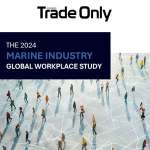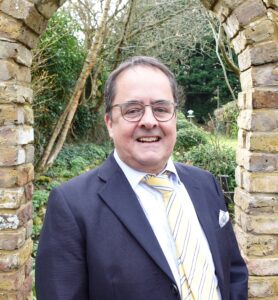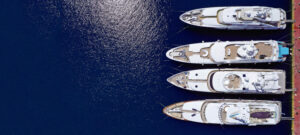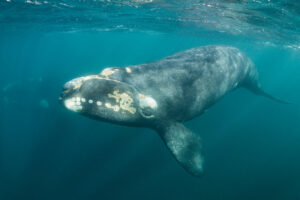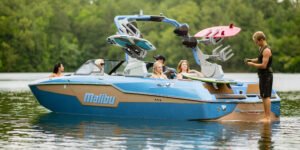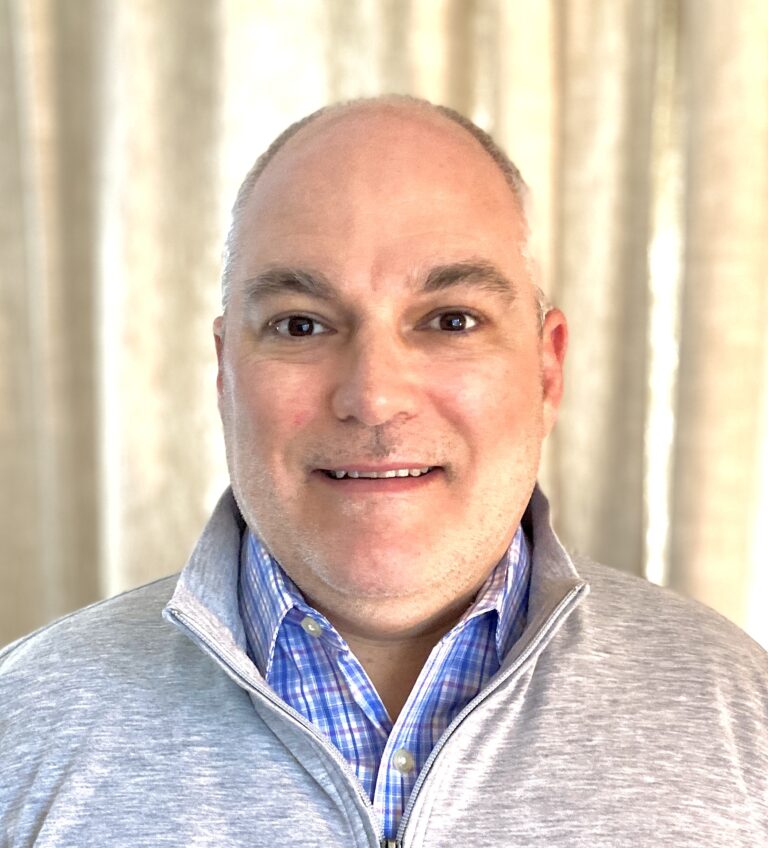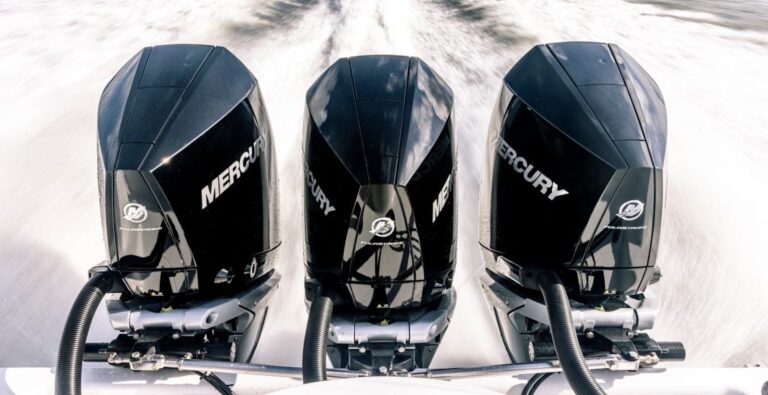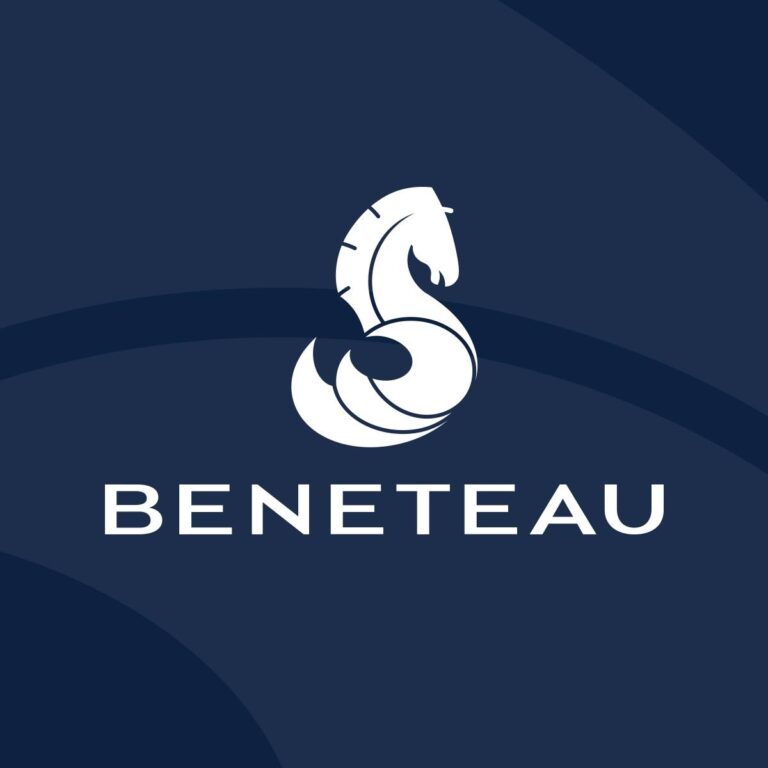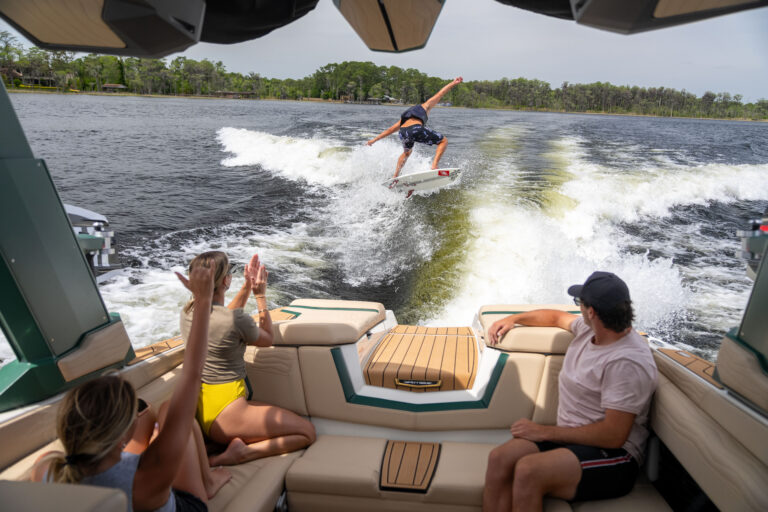
JRL Ventures, the parent company of Florida-based Marine Concepts, has seen record growth during the past two years. Marine Concepts was founded in the 1970s by industry vet Augusto “Kiko” Villalon, based on his conclusion that there was no design and development company that could develop a marine project from beginning to end.
His first customers were Regal Boats, Chaparral Boats and Cobia Boats. In 1994 Bob and Karen Long bought the company, fitting it under JRL with the idea of expanding into other industries.
Long has spent 45 years in the marine industry, including time at the helm of Starcraft and Crestliner, an 18-year reign at Wellcraft and 21 years as owner and CEO of JRL Ventures/Marine Concepts.
Long was inducted into the National Marine Manufacturers Association Hall of Fame at IBEX in September. A longtime NMMA member, he had helped form the trade organization in 1979 and sat on its board for six years.
Cape Coral-based JRL Enterprises bought the Wellcraft manufacturing facility near Sarasota in 2012 and has added more than 100 jobs since (there are 250 now). Long, 75, has been honored with the Governor’s Award for Florida job creation and has led the company to other accolades. The design, engineering, composites tooling and fiberglass parts manufacturer also has diversified into several different industries.

Trade Only chatted with Long to hear about his hand in the formation of the NMMA and his advocacy work, and to learn more about his company’s growth.
Q: Can you start by giving us an overview of the marine side of the company and how things at Marine Concepts have evolved?
A: I’ll start with a little history. Kiko Villalon, who was an engineer, developed Marine Concepts in 1976 to provide engineering services and tech services, primarily to the marine industry. Then he moved to provide the tooling. He knew that most of the marine companies did a lot of their own tooling and a lot of their own design. He was a good designer, so he started with a few companies and he designed the plug, which is the patterns, and the mold.
He got the company started well, but then the luxury tax kind of hit him, as it did so many people, so the company was hurting pretty bad. My wife, Karen, and I bought it in 1994. We saw it had a good basis for growth, and also I’d been in the marine business about 18 years with Wellcraft. I knew a lot of people, so we contacted them and got a few more customers.
I started hiring more people, so we began to broaden not only our customer base, but also our services. Those included the design of hulls, decks and all parts of the boats. We also hired more engineers and techs, and I began to build on a marine base and build on the equipment. We bought some five-axis CNC robotic routers, hired more and more people, and we really gained a good reputation.
Now we’re up to close to 250 people and we do provide engineering and design. We build patterns and plugs. We’re one of the few companies that build molds, and at times even parts. We do the complete gamut from design all the way through to the finished product. We don’t manufacture the products unless it’s just a first few finished products. That’s our basis. Of course, we have diversified into many other businesses, as well, but marine is still our primary focus. We are also in simulators, buses, trains, anything out of composites.

Q: I imagine that diversification helps offset the cyclical nature of the marine industry.
A: Yes, that’s why we got into it. I hired president Matt Chambers in 1996 and that was his job, to diversify into different industries. He’s done quite well with that. The fact that we diversified helped carry us through the recession. But marine is still about 75 percent of our business.
Q: Marine Concepts is experiencing record growth. Can you talk about that and tell us which segments you’ve seen the largest uptick in?
A: We started with 14 people. We were growing nicely until the recession hit. At that time we had about 110 people, and we cut down to under 25 for a short time. But I kept our best people and continue to carry them, engineers and technicians and so on, and we bounced back pretty quick. Now we’re up to around 250 people. We used to have 60,000 square feet; now we’ve got over 300,000 and we’re filling it up rapidly.
The segments that grow fluctuate a lot, going all the way back to tri-hulls when I first started, and then it went to deep-vees. Then we got ramped up on jet boats. It constantly changes. Recently ski boats and wake boats have been very strong. This year, for us, large cruisers and yachts have been quite good. That helps us a lot in the tooling and design business because one large boat for tooling can be worth a lot of smaller boats.
Fishing boats always [are] strong, in good times and in bad. So you don’t know what’s going to come up next, but there always is something. Hulls continually change. There are always improvements, depending on hulls, depending on the use, and of course you’re always looking for lighter weight, better performance.
On the top side, all kinds of amenities are being added to boats. To say where it’s going, that’s difficult, but I see new designs continuing to come on. I think there will continue to be more amenities and more creature comforts added as some boaters age. You see boats designed with side entry, which didn’t used to be, so it’s easier to get on and off, and things like joystick docking to make boating easier.

Q: What size boats are you seeing on the larger side?
A: We’re doing up to 90 feet. A lot over 50 — 40, 50, 70s and 90s. We’re doing Vikings and Bertrams, which are back, Hinckley, Cruisers Inc., Chris-Craft, a lot of the big boats like that. Now I can’t always say that’s where the market’s headed because we’re doing a good deal of tooling in that area. Yeah, we get a good view of it, but we don’t know. We’re picking up new customers all the time and broadening our customer base. So whether that means there’s a trend in that direction, I don’t know.
For us, the fact now, we’ve got a lot more space, we’ve got five five-axis CNC routers, so we can handle some pretty good-sized boats. We’ve got more space, so we’re getting bigger boats than we used to. There are still good sales of deck boats, fishing boats, runabouts, so I don’t know if that’s a trend, but for us, we see a lot of bigger boats.
Q: When was the expansion, and can you talk about why that space is filling up so quickly?
A: We’ve been expanding some all along. I started out with one building in Cape Coral. Then I added one more and one more and one more, so I had four down there. Then I started leasing out some buildings around town because we just didn’t have the room. I had worked for Wellcraft for 18 years and built a lot of buildings here. They had been up for sale for five or six years. I decided to look into that, even though it was a lot more than we needed. We worked out a decent price, bit the bullet, and my wife and I bought it.
That was about three years ago. That’s when we really jumped because we had about 300,000 square feet and 30 acres. Once we did that, we had the room. We started getting more and more work and bigger boats, and a lot of non-marine work — windmill blades, which are big, helicopter simulators, which are a pretty good size, things that need a bigger facility.
Q: How much have you grown, and how have you been able to exceed the overall rate of the marine industry’s recovery?
A: It all goes back to one thing: That’s the people, the employees. I’ve made it a point to hire some of the best and give them their freedom. We’ve got a terrific team of designers, production people, CNC operators, engineers, craftsmen. We very seldom lose a customer because they’re happy with our quality, our service and the professionalism of our people.
Just buying a big CNC router and having a bunch of space doesn’t do it. Anybody can do that. But the fact that we’ve got some terrific people — we’ve spent time looking for and vetting them — is the biggest factor enabling our growth. And, of course, the diversification into other markets. As far as how fast we’re growing, at the end of this fall we’re 40 percent ahead of where we were last year, and last year was a record year.

Q: I really enjoy your newsletters. My sense was that these are developed for the employees, and clearly there is time being put into them. To devote that much time to fostering a sense of camaraderie seems kind of unusual.
A: Camaraderie is a good word. We started that way back when I started at the company. As it says at the top, it’s for employees, customers, family and friends. So it’s pretty broad, and it goes out now to over 800 people. We do get a lot of compliments on it. We don’t have any professional writers. You can probably tell. I write a couple of the articles, and Matt and I always have a section in there that just tells how we’re doing, how things are going.
Then we try to have a few technical things for the engineers. We try to cover what’s new with the company and keep it light and keep the employees involved with events we have. It seems to work very well. It’s one of our best things we do because a lot of people read it. It just started out a homey little newsletter. Employees love it; customers love it. We just put some stuff together and we have someone who knows how to do some editing.
Q: I think most of us are increasingly squeezed for time, so the fact that you and the company president make time for that employee focus is pretty unusual.
A: You’re 100 percent right about that. It’s so important, but we have trouble finding the time to do it. There’s always pressure to sit down. Most of the time we sit down at home. I try to do mine on a Sunday afternoon when I’m sitting out behind the house, enjoying the weather, and sit without interruption and write out a few things.
We solicit other things from employees. We get it together. It’s hard to find the time with all we’re doing, but we get so many compliments on it that we’ve got to keep it going. We tried to subcontract it, but you have to be here living it to write about it. Do you know what I mean? It seemed sort of corny and fake then. You have to live it.
Q: Offering such a diverse range of services, I imagine you have had some pretty unusual and interesting requests.
A: Right now we’re doing a giant iceberg. It’s a ride for an amusement park in Malaysia. To really make it look like ice, we started out by cutting this big iceberg on our routers. We have to hand-do it, put the cracks and crevices in it and then polish it up. It was quite different and unique.
We did tooling for a climbing wall. We’re always doing something different. I’ll walk into the plant and say, ‘Well, what is that?’ We’re doing giant three-story stairwell enclosures, big fiberglass panels you put together to enclose the stairwells. We’ve done some urinals and things like that.
Then on boats, we’re doing one that takes the PWC up on it, and it slides right into it. That was rather unique. It’s usually amenities on boats rather than a total new way-out design. We’re doing pontoon boats that are all out of fiberglass now. They used to be all aluminum, but now we’re doing tooling for fiberglass because pontoon’s been a hot market.
The other thing is the processes we’re using. It used to be all hand-laid fiberglass. Now we do a lot of closed molding, RTM/resin transfer molding, vacuum bagging molds, a lot of the environmentally friendly-type tooling that we didn’t used to do.
Q: The fiberglass pontoon boat is interesting. I wonder if that’s the segment trying to break into the saltwater market.
A: That’s exactly what the purpose is — for salt water, because aluminum and salt water aren’t always friendly.
Q: And pontoon growth also speaks to the point you made about accessibility for people as they are older, and also for the very young.
A: Age, of course, is why pontoon boats are selling really well. They’re easy to get on and off. When I was at Wellcraft, everybody wanted the go-fast boats, but the baby boomers were young. As they get older, the pontoons are taking off. They’re getting into more easy handling, joystick docking, and certainly easier ways to access from the dock to the boat or from the boat to the water. There have been a lot of innovative ideas on access and safety.
Q: I know your wife has been an active part of the business, and I thought I read something about a grandchild or two. Do you get time out on the water with your kids and grandkids?
A: When I bought Marine Concepts, we had no grandkids. Now we’ve got 12, and the oldest one is in college. It’s been great growing up with the family all around boats. We’ve got two children and a son-in-law working with me. We have six children, five boys and a girl. She is all girl.
They grew up with boats. All we did on weekends was boat. I’ve always had multiple boats, still got five, though I don’t get much time to use them now. But we’ve done a lot of boating over the years. First lake boating, and then we started going to the Keys, then started taking a boat over to the Bahamas a couple of times a year.
That’s where we really learned a lot about navigation. When we’d go out with a new boat we would always take it over there and do testing on it. Of course, the first prototypes were all put together pretty quickly. I took my wife and a couple of kids over, and on the way we had some really heavy seas, and the cabinets fell down and the refrigerator fell out, and she said, ‘What kinds of boats are you building?’
They were just stable, some of the things, instead of really screwing them in, but we learned how to make them stronger and safer, for sure, by doing the tests. We always test every boat. That’s helped a lot in our design, too. Everybody here in our design area has been a boater and is a boater, so that makes a big difference.
Q: Some boats have a real purpose, so it seems you almost need that experience to be able to design the boats for those specific purposes.
A: I think you’re right. Everybody we hire into the design and engineering team has to have experience, and lot of them are naval architects, too. If you’re going to be a real hull designer, you have to be a naval architect as well.
Q: Hall of Fame! I read you actually had a hand in forming the NMMA in 1979. Were you surprised to achieve that?
A: Yes, I was surprised. First, the National Marine Manufacturers Association was not the first association. There were two associations back then, and I was a member of both. First was BIA — Boating Industry Association, out of Chicago — and they were primarily Midwestern and primarily runabout and fishing boats, and so on.
Then there was NAEBM — National Association of Engine and Boat Manufacturers — and they were out of New York. They were focused on the bigger boats at the time, like Hatteras, Viking, Chris-Crafts, some of those. So we all got together and said, hey, we ought to put it in one association and combine it because it helps when you’re working with government regulations and working with vendors and suppliers.
We worked for a year or two and came up with the NMMA, which was formed in 1980, I believe. I was on the first board of directors, and I became very good friends with all of those people on the board. And many of them still are [friends]. We still get together. Eddie Smith, Grady-White; Pack St. Clair, Cobalt; Slim Sommerville, who was Bayliner back at the time. We’re still the best of friends.
We were competitors, but we became very good friends. We still all meet two or three times a year and get together somewhere for a week or so. It’s really a wonderful association. I’m encouraging my kids and everybody to get involved because we did a lot of good, worked hard, worked with the government on laws, rules and regulations, but still had a real good time.
The Hall of Fame was a total surprise. We’ve won several awards here in Florida. We were manufacturer of the year in Florida. We’ve gotten multiple awards here. But the fact that I’ve been on the board of the NMMA for six years and been in the industry now for 40 years, I just knew a lot of people, so I was quite honored that they put me up.
They honored me at the annual meeting, which this year was in Louisville at IBEX, and gave me a nice plaque and a big, lighted award. As I said there, this goes back to the people we have. I wish all the people could’ve been there. They did all the work; they had the accomplishment, and I get the glory. It was very nice to receive that from the total marine industry.
Q: It’s so cool that you still get together and spend time with those guys. That seems so like the marine industry. There’s such value prioritizing family and friends.
A: Imagine what kind of competitors we were. I was at Wellcraft, and Grady-White, Bayliner, and Cruisers Inc.’s Terry Bogart. And our wives, too, are still best friends. It’s a wonderful association. It’s why when you go down the waterways and see someone, and you smile and wave at one another. You don’t see that with cars or trucks.
Q: What were some of the things you worked on with the NMMA? And what do you think is a priority now?
A: I’m not as close to it as I used to be. Our president, Matt Chambers, is very heavily involved. For us, it is more on the regulations of styrene and hazardous chemicals. Some of the changes were good, but they’ve got way overboard with some of that.
The luxury tax was a big issue I worked on. When it came out, its sole purpose was to tax the rich. It was a 10 percent tax on any boat over $100,000. It absolutely killed the boating industry. People just quit buying boats, literally. Every company either went broke or came very close to it.
The interesting part was that we were doing great at Wellcraft before that. We were making millions and paying millions in taxes to the federal government, but when it came out, everybody just stopped buying boats. The following year, we lost money and had to lay off a tremendous amount of employees, who we were providing jobs and health care to, and so on. Not only that, the money they raised by imposing the luxury tax on boats was less than what Wellcraft paid in taxes in one year before they introduced that.
It just put a lot of people out of work, including me. They came to their senses and repealed it, but before they did they killed a lot of good companies and cost thousands of people jobs.
I was heavily involved in that. I even represented Florida and went to Washington, D.C., several times with Rep. Connie Mack, who also worked hard on repealing that. A lot of companies took employees up to D.C., and the NMMA took busloads up and went to the Capitol to protest. That was the extreme, but that’s something we worked very hard to get repealed.
Q: That tactic of talking about the jobs in boating that are affected is still being employed today, and in fact Florida, as you know, just changed its laws around boat taxes and has seen its tax revenue increase dramatically. The luxury tax is always the example I hear of one of the first times the industry mobilized and told Congress how it was affecting American jobs.
A: The industry did mobilize. Some people think boating is only for the rich; they forget about the thousands of people that we employ, provide jobs and health care to. They don’t think of that. They just think of a rich guy driving a big yacht.
Boating is one area that is staying in the United States. So many things have gone overseas. Do you know one of the reasons boating has stayed here? It’s cubic-foot volume. Boats are big and take a lot of volume. They don’t weigh a lot, but they take a lot of volume. So to ship a boat is expensive. The size of it makes it very expensive to ship. They can build cheaper overseas, even though they can’t build it as well.
We lost one boatbuilder to China, who got it substantially cheaper, but he said, one, the quality wasn’t there, and second, to ship it over offset the reduction in building cost.
Q: Is there anything you want to add?
A: All business is just all about the people. It’s not the facilities, not the equipment, not the machinery. It’s the people you hire. You treat them right, pay them fairly and they’ll make you successful. We call our people a great team. There’s a difference between family and team. I’ve got a wonderful family. But in a family, if somebody’s messing up and not carrying their load, you’ll keep working with them and trying to get them straightened out. But in a team each team member has to carry his part. If they’re not, you’ve got to give them fair warning and work with them, but if they’re still not carrying their load, you’ve got to take them off the team.
It doesn’t happen too often, but when it’s necessary it does strengthen the rest of the team. People say we’ve got a family there at the company. I don’t say we’ve got a family. We’re a team, where each member of that team depends on the other members of that team, and that concept works extremely well.
This article originally appeared in the January 2016 issue.

